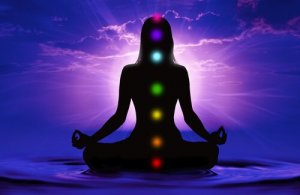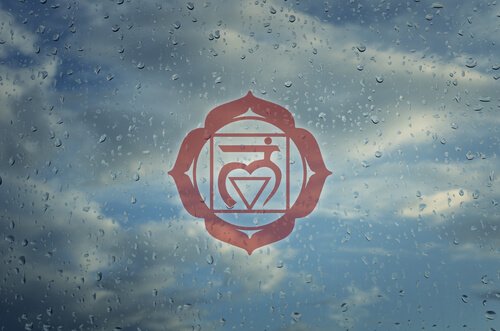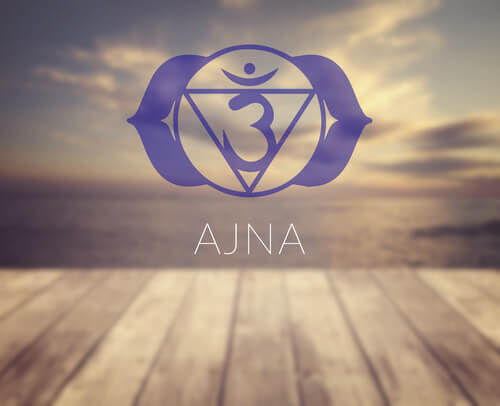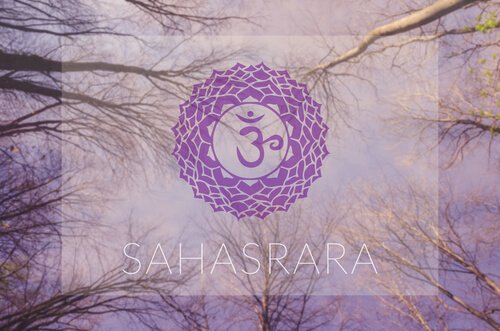Chakras: 7 Wonderful Energy Centers


Written and verified by the psychologist Gema Sánchez Cuevas
Eastern culture has identified energy centers situated in the human body called chakras. Here, different biological and psychological aspects of the way we relate to ourselves come together. When you balance your chakras, you put yourself on the path to health and wellness.
According to Hinduism, you achieve balanced chakras through your relationship with yourself, with other people, with nature, and with the divine. Consequently, an imbalance can manifest itself in personal and social dysfunctions.
It is important to know that there is a color, a location on the body, and a sound that relates to each chakra. When you meditate, each of these aspects favors balance and activation of the chakras. In this article, we will tell you a bit about each one of these wonderful energy centers.
“Nothing ever goes away until it has taught us what we need to know.”
-Pema Chödrön-
1st chakra: The Root Chakra
- Name: Muladhara.
- Color: Red.
- Associated Element: Earth.
- Location: The base of the spine.
- Sound: Lam.

This chakra has to do with biological, psychological, and relationship support. The center is linked with group strength and with roots. The parts of our bodies associated with this chakra are the legs, the feet, the immune system, the spine, and the bones.
What’s more, this energy center is the first one we developed and the one that supports the rest. Through this chakra, we relate to nature, other people, and ourselves. In addition, it connects us strongly with the energy of our ancestors. That can be helpful if you are going through a difficult time.
On a psychological level, this chakra relates to safety, defense, and the ability to fulfill needs. These aspects foster support. That’s because they relate to strength, protection, learning, and group beliefs.
When this chakra is not in balanced, it can lead to dysfunctions that have to do with lack of support. For example, problems with the immune system, back pain, or leg pain. Depression and anxiety, as well as other psychological issues, might arise from a root chakra imbalance.
To keep this chakra balanced, you have to be aware of the way you relate to your roots. For example, the way you relate to your family and your beliefs. Meditation also helps balance this chakra.
“Your beliefs aren’t made of realities. It is your reality that is made of your beliefs.”
-Richard Bandler-
Chakra 2: the wonderful way we relate to each other!
- Name: Svadhisthana.
- Color: Orange.
- Associated Element: Water.
- Location: From just below the abdomen to the belly button area.
- Sound: Vam.

This chakra is all about the dynamic that you have with others, with nature, and with yourself. As such, it relates to your worldview. Likewise, it has to do with creativity, money management, ethics, and sexuality. In other words, everything that has to do with interaction and connection.
Now, in your body, this chakra resides primarily in your sexual organs, your gut, your bladder, and your vertebrae. Dysfunctions related to this chakra have to do with problems in the aforementioned places. We see an imbalance in this chakra with psychological problems like attachment, pressure, dissatisfaction, impulsivity, and a feeling like the world is flat.
To keep the sacral chakra balanced, be well aware of your creative self. Pay attention to how you manage money. Observe your ability to put yourself in someone else’s place, and the way you communicate. Meditation is useful to activate this chakra.
Chakra 3: personal power!
- Name: Manipuraka.
- Color: Yellow.
- Associated Element: Fire.
- Location: Solar plexus.
- Sound: Ram.

This chakra is all about self-esteem, intention, coordination, and control. This chakra has to do with you and your personality.
The stomach, liver, kidneys, pancreas, adrenal glands, and the center of the spine are the organs of this chakra. When it isn’t in balance, it manifests itself in fear, intimidation, anorexia, bulimia, arthritis, and chronic or acute indigestion, among others.
In terms of the emotional self, this is one of the chakras that have to do with trust, self-care, care of others, and responsibility for decision-making. When this chakra is imbalanced, you have problems in all of those aspects. You can use meditation to balance this chakra. You must connect with your inner strength and visualize what you truly want.
“The measure of who we are is what we do with what we have.”
-Vince Lombardi-
Chakra 4: the incredible power of emotions
- Name: Anahata.
- Color: Green.
- Associated Element: Air.
- Location: The middle of the chest.
- Sound: Yam.

This is the energy center of unconditional love. It relates to understanding, affection, and forgiveness. At the physical level, it has to do with the heart, the lungs, the shoulders, the arms, the circulatory system, and the diaphragm. A balance of the Anahata chakra causes problems with the circulatory system, asthma, breast cancer, and pneumonia.
Its emotional manifestations are love and hate, ego-centrism, solitude, commitment, forgiveness, compassion, hope, and trust. As such, the emotional dysfunctions have to do with dependence, confusion, disbelief, mistrust, and the inability to forgive or commit.
“Love unconditionally. Don’t ask anything in return. Much comes on its own- that’s another thing. Don’t be a beggar. In love be an emperor. Just give it and see what happens. It will come back a thousandfold.”
-Osho-
Chakra 5: the throat chakra
- Name: Vishudda.
- Color: Blue.
- Associated Element: Ether.
- Location: Throat.
- Sound: Ham.

The 5th chakra is the chakra of will and self-expression. The organs of this energy center are the throat, the thyroid, the trachea, the cervical vertebrae, the mouth, the hypothalamus, the teeth, and the gums, among others. Physical dysfunctions related to this chakra relate to these parts of the body. Hoarseness and thyroid disorders are some examples.
Emotionally, this chakra is related to choice, expression, faith, knowledge, judgment, questioning, addiction, and following your goals.
Consequently, it relates to the ability to express what you feel, make decisions, and follow your dreams. When it is imbalanced, then, it relates to your criteria for judgment and communication and decision-making problems.
“He who has will has strength.” [translation]
-Menander-
Chakra 6: the power of your mind

This wonderful energy center is the one that connects to wisdom, intuition, and perception. On a physical level, then, it relates to the nervous system, the eyes, the ears, and the nose. Imbalance causes neurological disorders, blindness, deafness, and learning disabilities.
Psychologically, it manifests itself in the way you see yourself, truth, emotional intelligence, and tolerance of other people’s ideas. In other words, it is the ability that we have to evaluate our own beliefs and attitudes.
It is also related to introspection and good judgment. Consequently, if your 6th chakra is imbalanced, you will have problems in these areas.
“Be happy, every place is here and every moment is now.”
-Buddha-
Chakra 7 – the spiritual connection
- Name: Sahasrara.
- Color: White.
- Associated Element: Cosmic sound.
- Location: Crown of the head.
- Sound: Silence.

This is the energy center for everything spiritual and transcendent. It is the chakra of the force between mind, body, and spirit. It is related to the ability we have to trust in life, generosity, worldview, faith, inspiration, and devotion. When it isn’t in balance, it can cause disorders on an energy level. In addition, an imbalance of the 7th chakra can cause extreme sensibility to environmental factors.
“The secret of human freedom is to act well, without attachment to the results.”
-Bhagavad Gita-
How to balance your chakras
Now, as you’ve seen, meditation is the best way to revitalize your chakras and be in deep connection with them. Another way to foster balance in the chakras is to focus on the colors, sounds, elements, and places of each chakra.
In addition, it also helps to visualize the balance that you want to come into your life. It is important to live a healthy lifestyle on an emotional and physical level.
Also, to find out what chakras are imbalanced you should listen to your body and mind. Then, try to reach a place of fullness and balance. It’s all about being attentive to problems you have and trying to solve them. So, meditation can help connect with your inner self and find solutions to your problems.
Eastern culture believes that you can achieve tranquility by taking care of this flow of energy. This allows personal growth and step-by-step learning to reach harmony through deep connection.
As a result, being aware of your chakras is a way to get to know yourself better. You can learn about yourself and your environment by finding a balance of energy. After all, as Caroline Myss says, “healing of the body comes through healing of the soul.”
Myss, C. (1996). Anatomía del Espíritu. La curación del cuerpo llega a través del alma. Zeta de bolsillo, España.
All cited sources were thoroughly reviewed by our team to ensure their quality, reliability, currency, and validity. The bibliography of this article was considered reliable and of academic or scientific accuracy.
- Myss, C. (1996). Anatomía del Espíritu. La curación del cuerpo llega a través del alma. Zeta de bolsillo, España.
- Dudeja, J. P. (2017). Scientific analysis of mantra-based meditation and its beneficial effects: An overview. International Journal of Advanced Scientific Technologies in Engineering and Management Sciences, 3(6), 21-26.
- Kim, T. S., Park, J. S., & Kim, M. A. (2008). The relation of meditation to power and well-being. Nursing Science Quarterly, 21(1), 49-58.
This text is provided for informational purposes only and does not replace consultation with a professional. If in doubt, consult your specialist.








